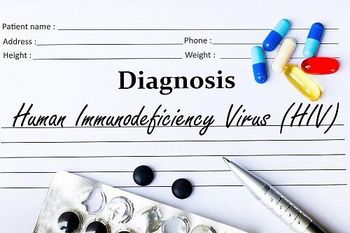A new global modeling study published in The Lancet Gastroenterology & Hepatology estimates that approximately 73,862 children are born each year with hepatitis C virus (HCV) through vertical transmission. Of these, an estimated 23,120 children remain infected by age five, after accounting for spontaneous clearance and mortality.1
Researchers from the University of Bristol and the UK’s National Institute for Health and Care Research (NIHR) combined national data on HCV prevalence among women of reproductive age, birth rates, and transmission probabilities to generate the first country-level and global estimates of perinatal HCV transmission.1
The analysis identifies Pakistan and Nigeria as the countries with the highest burden, together accounting for roughly one-third of annual vertical HCV infections. Other countries with high estimated case numbers include China, Russia, and India. Southern Asia and sub-Saharan Africa were found to have the highest regional burdens.1
“Most children who acquire HCV perinatally are not identified early, missing opportunities for linkage to care,” said Adam Trickey, senior research fellow at the University of Bristol Medical School and lead author of the study. “Pregnancy provides a potential opportunity to screen women for HCV and offer follow-up for mother and child.”2
The study estimates vertical transmission risk at approximately 7% per birth, with about two-thirds of infected infants expected to spontaneously clear the virus by age five. Estimates were derived using a synthesis of UN demographic data, HCV prevalence modeling, and meta-analyses on vertical transmission probabilities, co-infection with HIV, and clearance rates.1
What You Need To Know
About 74,000 children are born annually with the hepatitis C virus, with 23,000 remaining infected by age five.
Pakistan and Nigeria account for roughly one-third of global vertically transmitted HCV cases.
Limited HCV screening during pregnancy and childhood delays diagnosis and treatment despite available cures.
While highly effective direct-acting antivirals (DAAs) for HCV have been available since 2014, most treatment guidelines do not recommend use during pregnancy due to limited safety data. However, early clinical trials suggest high cure rates with minimal adverse effects, and further evidence is expected.1
Current US and European guidelines recommend universal HCV screening during pregnancy, but implementation remains inconsistent globally. In 2022, the World Health Organization reported that only 36% of people with HCV globally were aware of their infection, and 240,000 died of HCV-related liver disease that year.1
Treatment for pediatric HCV is generally initiated after age three, according to most international guidelines. Expanded screening and postnatal monitoring could improve early identification and timely access to care for affected children.1
Another comprehensive analysis from 2024 included over 311 million pregnant individuals across 333 studies, reported a pooled maternal HCV seroprevalence of 2.6% and a maternal-to-child transmission rate of 9% (95% CI: 6.6–11.7%), notably higher in the context of maternal HIV coinfection.3 This rate aligns with the ~7% vertical transmission probability used in the Bristol-led global modeling study, reinforcing its assumptions and findings.
Overall, authors emphasize that improving diagnostic coverage and antenatal screening policies will be key to reducing the burden of vertically transmitted HCV and achieving global hepatitis elimination targets.
References
1.Trickey AJW, Artenie A, Feld JJ, Vickerman PT, et. al. Estimating the annual number of hepatitis C virus infections through vertical transmission at country, regional, and global levels: a data synthesis study. Lancet Gastroenterol Hepatol. published online July 23, 2025. doi:10.1016/S2468‑1253(25)00189‑X
2.Pioneering research reveals worldwide scale of Hepatitis C among babies and children. Eurekalert. Published July 28, 2025. Accessed July 28, 2025. https://www.eurekalert.org/news-releases/1092698
2.Benova L, Mohamoud YA, Calvert C, Abu-Raddad LJ. Vertical transmission of hepatitis C virus: systematic review and meta-analysis. Clin Infect Dis. 2014;59(6):765-773. doi:10.1093/cid/ciu447




















































































































































































































































































